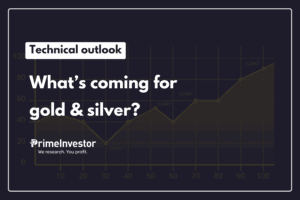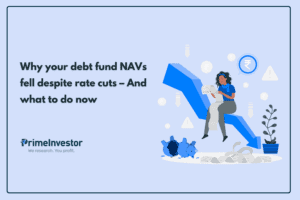In most walks of life, choice is a good thing. Who doesn’t like to skim through 99 varieties of dosa before choosing a ghee roast or browse 12,499 kurtas online before selecting a plain black one? But when it comes to investing, choice either paralyses you or leads to wrong decisions.
The bucketing of equity funds into large, mid and small-cap funds and various combinations of these market caps is a case where choice is counter-productive. New investors delay starting their first SIP (systematic investment plan) because they simply don’t get what ‘caps’ are and which one will best fit them.
Seasoned investors lose out in trying to shuffle cleverly between large, mid and small-cap funds and doing it at all the wrong times. Market experts worsen the problem by telling investors what is a good time to bet on large, mid or small-cap funds.
Based on our own experience, we folks at PrimeInvestor believe that for good results from equity investing, an investor needs to be market-cap agnostic. Here’s what you need to know to mix and match large, mid and small-cap funds for a sound portfolio.

Not a quality indicator
The classification of funds into large, mid and small-cap funds gives you the impression that there’s some kind of class system within equities. Market gurus also reinforce this perception that large-caps represent the bluechips of the listed universe, while mid-caps come next and small-caps are also-rans. And based on this premise, you may want to avoid mid-caps and small-caps altogether to limit risks.
This is simply not right. Relying on market-cap alone to pick quality companies will see you lose opportunities. For the purposes of mutual fund categorisation, SEBI defines the top 100 stocks by market capitalisation as large-caps in India, with the next 150 stocks classified as mid-caps and all the other stocks beyond the top 250, falling into the small-cap bucket.
Market cap or market capitalisation is simply the current market price of a stock multiplied by the company’s outstanding equity.
As we well know, stock prices gyrate every hour and every day, based on shifting perceptions about the market, sectors and companies. Stock prices also over-react to good or bad news. A large equity base is no indicator of a company’s heft in its sector. Some sectors by their very nature call for large capital requirements, while others do not.
All this makes market cap alone a bad filter to screen for stocks to own, because market cap simply does not tell you anything about the quality and prospects of the underlying business.
History tells us that being a giant-cap company is not a guarantee for top-quality. Companies from the Nifty 50 and the Sensex 30 have fallen prey to governance issues, scams and business adversities that decimate shareholder value. Satyam Computers, DLF, Ranbaxy and Adani Enterprises were Nifty 50 names when they got embroiled in governance issues. Reliance Power, Reliance Infrastructure, JP Associates, Zee Telefilms were index companies that destroyed shareholder wealth over the last 15 years. Some Nifty names such as Jet Airways and Reliance Capital have ended up at insolvency court.
At the same time, we can also name many small and mid-cap companies that have an unimpeachable governance record and have delivered consistent compounding with generous dividend payouts – Marico, CRISIL, CDSL being a few examples.
As a long-term equity investor, you should be screening the listed universe for businesses that have a long growth runway, healthy cash flows and margins, good ROE and ROCE (Return on Equity and Capital Employed) and shareholder-friendly managements. Such business can exist in any market cap segment – large, mid or small caps. This is why restricting your investment universe to large cap funds alone will lead to missed opportunities.
Read this recent article on why you need mid-caps and small-caps in your portfolio.
The moat argument
There are two other arguments advanced by advocates of large-cap funds: it is safer to invest in them because they own the leading companies across sectors, which enjoy dominant market share, pricing power and moat in the form of borrowing power, distribution strengths, brand loyalty etc. And, because of their sheer size, large-cap companies are better-placed to weather economic slowdowns and downturns. Therefore, they deliver lower earnings volatility than mid or small-cap companies.
The above arguments confuse the attributes of a business with its market cap. For one, not all companies in the large-cap space are market leaders in their respective sectors. A sector like banking has multiple companies represented in the large-cap segment, entirely because the capital requirements of the sector are large. While HDFC Bank, ICICI Bank and SBI are market leading banks, those like Axis or IndusInd are not – but they still figure in the large-cap category.
Two, even if large-cap companies are market leaders, they certainly can be vulnerable to economic and business cycles. In fact, the Indian large-cap space features a heavy representation from cyclical sectors such as banking, oil and gas, infrastructure, steel, cement and metals, all of which see volatile earnings because they are strongly linked to the economy.
Three, it is not a given that all companies with market leadership positions will feature only in the large-cap basket. In fact, firms holding market leadership positions in many of the non-commodity, less economically sensitive sectors in India, feature in the mid or small-cap spaces and not in the large-cap space. This could be because these sectors are emerging or have limited capital needs.
For example, the AMC space is a promising one with a huge growth runway, but the largest listed company HDFC AMC is a mid-cap stock. The largest hospitality player (Indian Hotels) and railway booking monopoly (IRCTC) are mid-caps. The largest multiplex player (PVR), the largest listed depository and RTA (CDSL and CAMS), the largest listed brokers (Angel and ICICI Direct), the largest listed microfinance companies (Spandana Spoorthy and CreditAccess Grameen) all figure in ‘small-caps’, as per SEBI’s definition.
Therefore, avoiding mid and small-cap funds altogether will needlessly exclude many promising sectors and quality companies, from your opportunity set. Neither seasoned nor new investors may like to make this call.
Timing strategy
The above arguments show that, to own quality businesses and maximise their return potential from equities, investors cannot do without a mid-cap and small-cap exposure in their equity portfolios.
But there is one key factor that does argue for a higher allocation to large-cap funds over mid-cap or small-cap funds. This is price volatility – small and mid-cap stock prices tend to be far more volatile than those for large-caps.
A rolling return analysis of the total return indices of the Nifty100, Nifty Midcap100 and Nifty Smallcap100 (as proxies for the large-cap, mid-cap and small-caps) for the last two decades throws up the following return profile.
The table below shows that mid-caps and small-caps, on an average, deliver much better annual and 5-year returns than large-caps. But the average in their case is quite misleading because of the yawning gap between their best and worst years.
If mid-caps and small-caps did much better than the Nifty100 in their best year, with a 129% and 139% return, they also lost a stomach-churning 59% and 71% in their worst years. What’s more, while the Nifty100 has never delivered a loss over a 5-year holding period, both Nifty Midcap 100 and Nifty Smallcap100 have made losses even over some 5-year holding periods.
The high volatility in mid- and small-cap stocks relative to large-caps is the main reason why some market experts advise that newbie investors stick only to large-cap stocks and funds without venturing into the other categories. They believe that investors who are relatively new to equities or those who have never lived through a big bear market can get spooked and exit their holdings in panic, when they lose 60% or 70% in a single year in a mid or small-cap fund. But then, newbie investors can be put off by a 50% decline in large-cap or index funds too and exit in panic!
Therefore, given that mid-and-smallcaps are important components to a well-rounded portfolio, new investors can certainly add such funds. It’s the allocation in the portfolio that matters (see next section)
The big falls suffered by the mid-and-small cap segments also is the reasoning behind asking investors to exit small-cap funds and stay with large-cap ones, when markets are at new highs. Since nobody can predict with any degree of accuracy when the market is ready to peak out and when the next bear market will arrive, exiting any equity category in haste when the market makes a new high can be extremely injurious to one’s wealth.
Over-cautious folks who thought the Indian market was terribly over-valued when the Nifty 50’s PE crossed 25 in mid-2017 and exited their equity funds in the hope of re-entering have never had an opportunity to look in at those Nifty levels (about 9700) again.
On the other hand, even investors who were unlucky enough to jump in with lumpsums at the top of the bull runs in 2000, 2008, 2017 or 2019, have earned a reasonable return from their equity funds, if they held on till date.
Further, using the PEs of the mid-cap or small-cap indices as an indicator to gauge when these segments are over-valued has proved equally fatal. Both the mid-cap and small-cap universe feature a significant polarisation of fundamentals, earnings, growth and PE metrics between individual stocks. Some stocks pass with flying colours on all variables, while others miserably fail. Therefore, averages such as PE tend to be misleading metrics on the basis of which to make entry or exit decisions from mid-cap and small-cap funds.
The right strategy
To summarize, investors need to avoid sticking to largecap funds alone or shifting constantly between market cap categories based on what market commentary and returns are.
In our view, investors can take the following approach to mixing and matching large, mid and small-cap funds in their portfolio:
- Start with a fixed allocation between large, mid and small-cap funds in your equity portfolio (within an asset-allocated portfolio between equity & debt). If you are uncomfortable with volatility, have a bigger large-cap allocation and divide the rest of your portfolio between mid and small-cap funds. This mix should depend on your investing horizon and ability to take return volatility. Avoid owning mid-cap and small-cap funds for goals where your investment horizon is less than 5-7 years. Allocate only to large-cap funds for such goals. If you need help with deciding allocations, use our Build Your Own Portfolio tool. Refer to Prime Funds for your scheme choices.
- Maintain the allocation above. This will help you buy into small and mid-cap funds during market draw-downs (since the allocation to these funds would have fallen, and you will need to invest to bring it back up), which will bump up your long-term returns. It will also help you partially book profits on any over-heated market cap segment without completely exiting it (by pruning exposure back to the original level).
- Periodically monitor your market cap mix using Portfolio Review Pro which makes it easy for you to gauge your large, mid and small-cap allocations. This is especially useful since there are multiple fund categories (such as focused, value, multicap, etc.) that invest across market capitalisations.
- There are passive funds that you can easily turn to, if you do not want the trouble of tracking active fund performance. In the mid and smallcap categories, especially, fund performance can vary. You can go with a simple mix of large-cap and mid-cap index funds. Here again, Prime Funds has passive recommendations as well.
- Use SIPs to invest especially in the more volatile marketcap categories, as this will help reduce timing risks.





14 thoughts on “How to approach large, mid and small-cap funds for your portfolio”
General query – If we say reccommended Asset allocation for a person’s risk profile is 75% in equity and 25% is in Debt,
1. This %age distribution is considering @ cost of acquisition or @ market price ?
2. Instruments like FD/PPF/EPF are to be considered as part of Debt ?
It refers to allocation based on market value. When you start it will be based on cost but later will need to be followed on market price. And yes FD PF etc will be part of debt
clear .. thanks!
Sage advice. Excellent article. I would only add that Volatility is an inevitable attribute of Equity (as opposed to Debt) investing. I also appreciate that it can be quite scary at times. So can life…
You hit the nail on the head! If you learn to take volatility you need not be wary of microcaps or smallcaps.
This is a general query and not a personal one.
Could you please provide clarity on this contradictory information?
In the description of Nippon Small Cap Growth Fund you have mentioned:
“Make sure mid and small-cap funds together don’t account for over 20-25% of your portfolio even if you are a very aggressive investor.”
In this article you are recommending:
“If you are uncomfortable with volatility, have a bigger large-cap allocation (say 50%) and divide the rest of your portfolio between mid and small-cap funds.” That means mid+small would come to 50%, which contradicts your above recommendation.
Both recommendations are for 5 to 7 years of investment time horizon.
We mean an asset-allocated portfolio here, not a full-equity portfolio, so it will not be 50% in mid-and-smallcap. We missed this point – we’ll edit the post to make that clear. Thanks for bringing this to our notice.
As an aside, we also see that you have raised a ticket with the same query. Request you to please stick to the ticket system for queries specific to our recommendations, and to kindly avoid raising the same question across multiple channels. – thanks, Bhavana
Thank you. Appreciate your reply. [I realized that; however I couldn’t delete or edit my post.]
Yes this was meant within equity allocations.
Hi Aarati,
How would you compare market cap based diversification vs ‘style’ based diversification..? With most active large & midcap funds failing to beat their respective benchmarks, are passive factor based index funds the way to achieve style diversification and subsequently, generating some alpha…??
Regards…. Jatin
No I prefer active funds for style diversification. Most factor funds are based on Nifty 50 or Nifty 100 which narrows the opportunity set for picking value or growth.
How would your recommendations change if we throw in Flexi-cap funds?
Flexicap funds will be sufficient if they mirror your own asset allocation preferences. But flexicap funds when they grow large tend to turn very large cap heavy with limited smallcap exposure
Excellent Article, Madam. Runway for growth is missed out when the growth sectors are not identified.
Comments are closed.